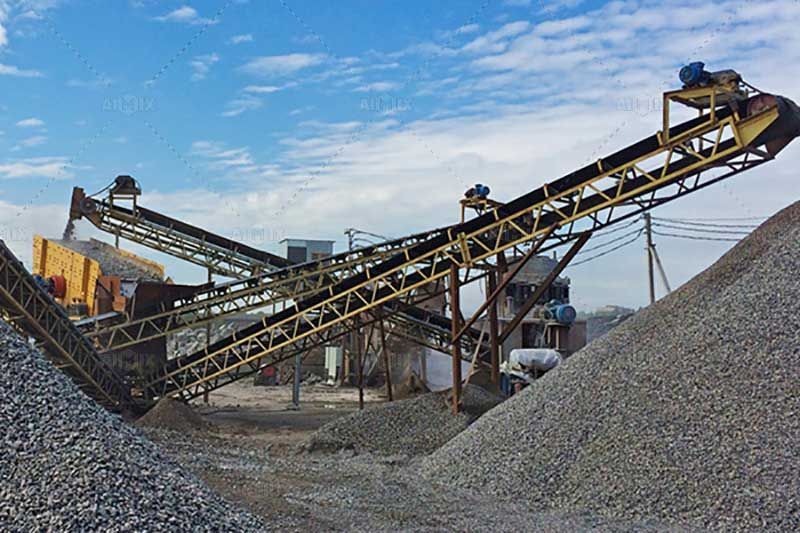Are there specific safety considerations unique to operating mobile rock crusher compared to stationary ones?
- By AIMIX Group
- •
- 30 Jun, 2024
- •

In the realm of rock crushing operations, understanding the safety considerations associated with operating mobile and stationary rock crushers is paramount. As versatile tools in the mining and construction industries, these machines play a pivotal role in breaking down large rocks into smaller, more manageable sizes. However, it's crucial to recognize that specific safety considerations vary between mobile and stationary rock crushers.
Specific Safety Considerations for Operating Mobile Rock Crushers
Mobile rock crushers offer unparalleled flexibility and efficiency in crushing operations, but they also present unique safety challenges that operators must address diligently.
Mobility-related Hazards
Operating a mobile rock crusher entails navigating various terrain types and transportation challenges, which can pose significant safety risks.
Terrain Instability: Mobile rock crushers may encounter uneven or unstable ground conditions, increasing the risk of equipment tipping or rollovers if not operated cautiously.
Transportation Risks: The process of transporting portable rock crusher machine between job sites exposes operators to hazards associated with heavy equipment movement, including collisions, overturning, and load shifting.
Environmental Factors
In addition to mobility-related hazards, mobile rock crushers are also exposed to environmental factors that can impact operator safety and health.
Dust and Particulate Matter: Crushing operations generate airborne dust and particulate matter, posing respiratory health risks to operators if proper dust suppression measures are not implemented.
Noise Levels: Mobile rock crushers produce high levels of noise during operation, which can lead to hearing loss and other auditory health issues for operators if adequate noise mitigation strategies are not employed.
Unique Safety Considerations for Stationary Rock Crushers
While stationary rock crushers lack the mobility of their mobile counterparts, they present their own set of safety considerations that operators must address diligently. View more details about crusher machines here: https://aimixgroup.com/.
Stability Concerns
Stationary rock crushers rely on stable foundations and structural integrity to operate safely and efficiently.
Foundation Integrity: Ensuring the structural integrity of the crusher's foundation is crucial to prevent collapses or structural failures during operation.
Structural Stability: Stationary rock crushers must withstand heavy loads and vibrations without compromising their structural stability, necessitating regular inspections and maintenance to identify and address potential weaknesses.
Operational Risks
Stationary rock crushers may face operational risks unique to their static nature and limited mobility.
Access and Maintenance Challenges: Limited mobility can hinder access to certain components of stationary rock crushers, making maintenance tasks more challenging and time-consuming.
Limited Mobility for Emergency Situations: In the event of an emergency, such as a mechanical failure or personnel injury, the limited mobility of stationary rock crushers may impede prompt evacuation or equipment relocation, highlighting the importance of comprehensive emergency response plans.
In conclusion, operating mobile and stationary rock crushers each present their own set of safety considerations that operators must address to ensure the well-being of personnel and the integrity of equipment. By understanding and mitigating these unique hazards, operators can safely and efficiently utilize limestone gravel crusher in various mining and construction applications.
AIMIX Global Products
- Stone Crusher
- rock crusher
- Limestone Crusher
- granite crusher
- quartz crusher
- quarry crusher
- Gravel Crusher
- mobile crusher plant
- stone crusher plant
- crushing plant
- mobile impact crusher
- mobile jaw crusher
- mobile crusher
- mobile cone crusher
- mini self loading concrete mixer
- self loading mobile concrete mixture
- self loading concrete mixer for sale
- self loading concrete mixer truck
- self loading cement mixer
- asphalt plant for sale
- asphalt mobile plant
- drum mix plant
- mini asphalt plants for sale
- portable asphalt mixing plant
- asphalt hot mix plant
- batching plant manufacturers
- concrete plant for sale
- small concrete batch plant
- mini cement plant
- mobile concrete plant
- portable batch plant
- stationary concrete batching plant
- ready mix concrete plant
- how does a batching plant work
- concrete batching plant price
- ready mix concrete plant in bangladesh
- concrete batching plant in uae
- concrete batching plant indonesia
- concrete batching plant malaysia
- concrete batching plant for sale australia
- concrete batching plant Philippines
- concrete batching plant for sale UK
- concrete batching plant in saudi arabia
- concrete pump
- concrete mixer with pump
- mobile concrete pump
- portable concrete pump
- concrete trailer pump
- mini concrete pump
- small concrete pumps
- diesel concrete pump
- electric concrete pump
- hydraulic concrete pump
- dry mix mortar plant
- small dry mortar plant
- automatic dry mortar plant equipment
- big dry mortar plant
- dry mortar production line manufacturer
- dry mortar production line
- Tile adhesive manufacturing plant
